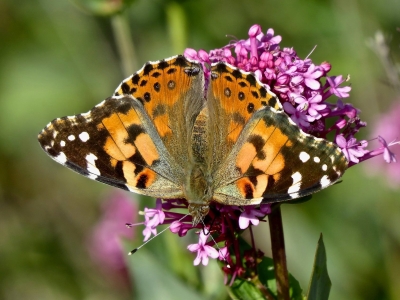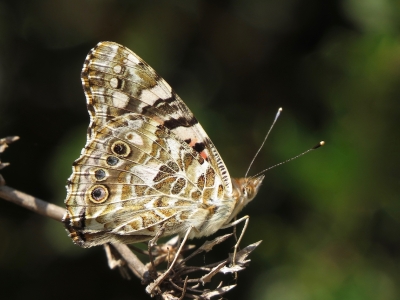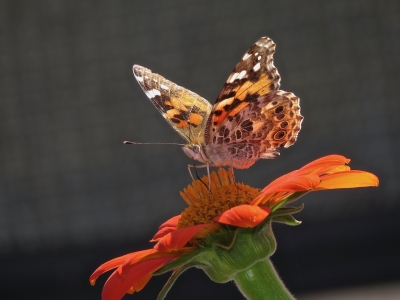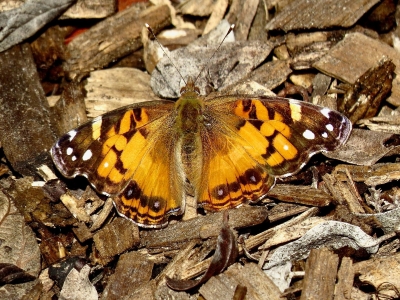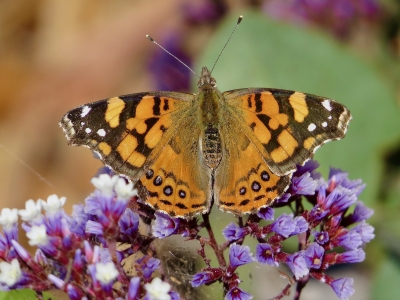Painted Lady (Vanessa cardui) is a medium-sized butterfly, with a wingspan of 2 to 2.875 inches. In our local area, it can be seen during all 12 months, although numbers are very low in December and January. Numbers peak in April. More than a hundred host plants have been recorded for this butterfly. Favorites include Thistle (Asteraceae), Hollyhock and Mallow (Malvaceae), and various legumes (Fabaceae).
It is one of the most common butterflies in North America, and the most widespread butterfly inthe world, being found on all continents except South America and Antarctica.
In the US, there is a migration in the spring from the deserts of northern Mexico through the central valley of California to Sacramento, and then to Oregon. That’s the main branch of the California migration. A smaller branch comes through the Bay Area, and some of the migrating butterflies stop in the Bay Area for the season.
When heavy winter rains in the deserts lead to a huge bloom of wildflowers, this means abundant food for Painted Lady caterpillars. The result is a huge population explosion, and an especially large mass migration. There was a huge migration in 2005, involving billions of butterflies. And a large one again in 2019. That year, Painted Lady swarms were large enough to be picked up on airport radar in Denver.
While everyone has heard about the epic migration of the Monarch, it’s actually the Painted Lady that makes the longest known butterfly migration. That migration runs from sub-Saharan Africa north through Europe all the way to the Arctic Circle, 9,000 miles round trip, almost double the length of the Monarch migration. The Painted Lady round-trip migration takes 6 generations. Scientists have recently discovered that Painted Ladies also fly 2,600 miles non-stop west from West Africa to South America. That is the longest known non-stop flight by any butterfly species.
There are two other Ladies we get in the Garden: American Lady (Vanessa virginiensis) and West Coast Lady (Vanessa annabella). American Lady can usually be distinguished by the white dot it has in the large orange spot on the forewing; the Painted Lady has no spot there. West Coast Lady can be distinguished by looking at the largest spot in the black tip of the forewing. This is orange for West Coast Lady, but white for Painted Lady.

